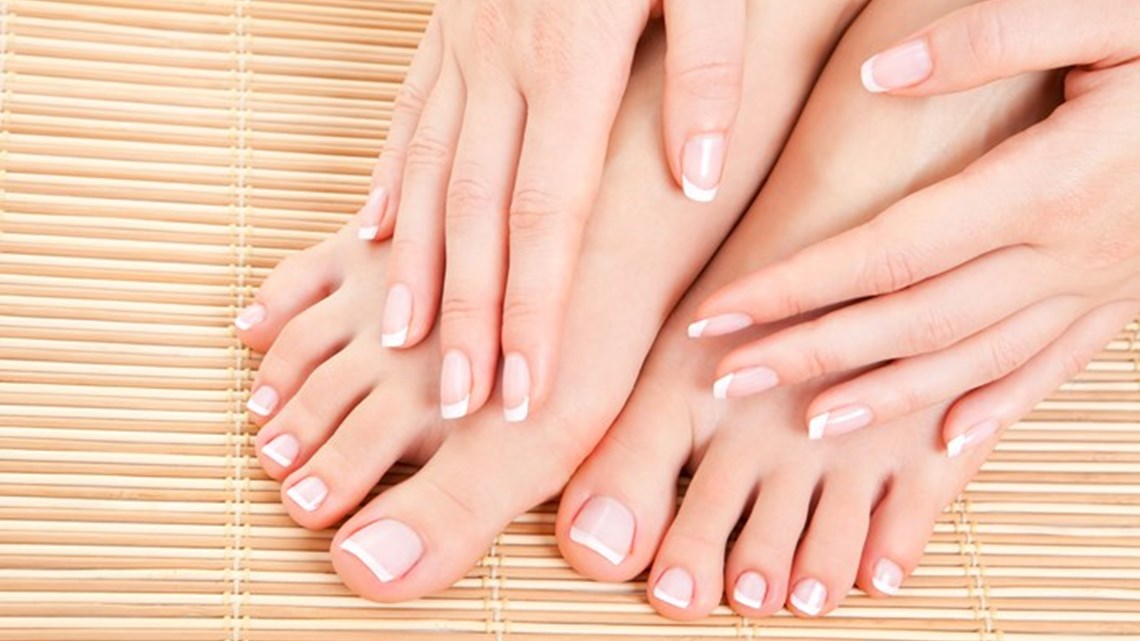
Mastering the Okana pedicure
 You might think Okana is all about faces, but we’re also about bodies…and feet! Wherever there’s skin, our products can make you look and feel more beautiful. Here’s how you can use our range to give yourself an outstanding home pedicure.
You might think Okana is all about faces, but we’re also about bodies…and feet! Wherever there’s skin, our products can make you look and feel more beautiful. Here’s how you can use our range to give yourself an outstanding home pedicure.
Having well-maintained feet isn’t just about vanity, it’s also about health. Your feet have a big job to do, carrying you around life in sometimes-inappropriate shoes. If you look after your tootsies, there’s less chance of picking up an uncomfortable or embarrassing problem, like athlete’s foot or ingrown toenails.
We recommend giving yourself a pedicure every two to three weeks. And we’re not talking about simply removing and reapplying polish. A holistic approach to foot care means getting rid of dead skin, smoothing off calluses, trimming and filing nails, and doing some work on your cuticles.
Step one: Soaking
Start with a basin, or bucket, of warm water. Before you put your feet in, rub them all over with Okana Avocado Smash Body Butter. It’s thick and creamy, so will cling to your skin even once your feet are immersed. Read a book, listen to a podcast or stream something on TV for about 15 minutes.
Step two: Scrub with sugar scrub
Lift one foot out onto a big, fluffy towel. Take a generous scoop of Okana Brown Sugar Scrub and scrub every square centimetre of the foot, from ankle down. Pay extra attention to between your toes and the foot sole. Put that foot back in the basin/bucket, then do the scrubbing process with the other foot.
Step three: Remove calluses
Certain areas of your feet will have thicker, rough skin, i.e. calluses. Around the edges of your heels, the ends of your toes and the sides of the foot tend to suffer from this problem. Calluses are caused by repeated friction or pressure, so if you’re an athlete, you might have thicker callused areas.
It’s important to deal to calluses, even though they will always rebuild themselves. If you ignore them, the skin can become dry and cracked. Cracked heels are not a good look for summer; they can also become really painful.
If your callused areas are relatively minor, pumice stone can do the trick. It’s a volcanic form of sandpaper that you can pick up for free on the shores of Lake Taupo and various other beaches around New Zealand.
If you’re a long-distance runner or fervent weekend warrior, wet and dry sandpaper might be the best way to smooth calluses. Or your Nana might have given you one of those battery-operated foot files for Christmas. There are various solutions for sanding down calluses; you might need to try a few options before you find something that does the trick. Sometimes you get little calluses right on the ends of your toes. For these, an emery board is effective.
Step four: Push back cuticles and trim nails
All this soaking and scrubbing will have made your nails and cuticles nice and soft. Before you get busy with the trimming, use an orange stick or cuticle spoon to push your cuticles back. Cuticle is the skin at the top of each nail.
Unless you’re really good at moisturising your feet each day, cuticle skin can get stuck, making your nails appear shorter. It shouldn’t be necessary to cut your cuticles if you get into the habit of pushing them back.
To trim your nails, choose your weapon. You could use a tiny pair of nail scissors, nail clippers or a really efficient crystal nail file. Most toenails benefit from a straight-across cut, which you can smooth with an emery board. If your big toenails are digging into your flesh at each corner, you run the risk of ingrown toenails - a whole new kind of hell that you definitely want to avoid. Use an orange stick or nail implement to clean under your toenails, which tend to accumulate keratin debris and dirt. It’s not pleasant, but it’s definitely necessary.
Step five: Clean and dry
All this ferocious trimming, cuticle pushing and cleaning under your nails makes it necessary to give your tootsies a final dunk in a fresh basin of warm water. If you have an obliging partner, a foot massage with Okana Body Butter could follow. Wouldn’t that be nice!
Step six: Decorate and moisturise
Traditional nail polish is full of harsh chemical ingredients, but you can now buy new-generation nail polishes that don’t contain the usual baddies (formaldehyde, toluene, DBP, camphor, formaldehyde resin, xylene, parabens, fragrances and phthalates). Just Google around; you’ll find them.
After you’ve polished your nails and let them dry, moisturise your feet with a little body butter to complete the picture. Perfect!
May your beautiful feet take you where your heart wants to go.




Leave a comment
This site is protected by hCaptcha and the hCaptcha Privacy Policy and Terms of Service apply.